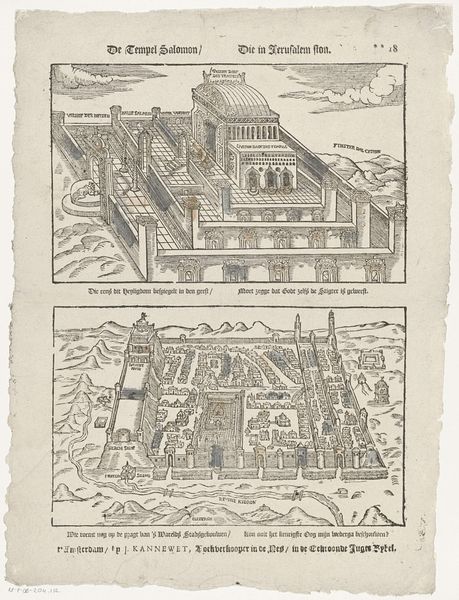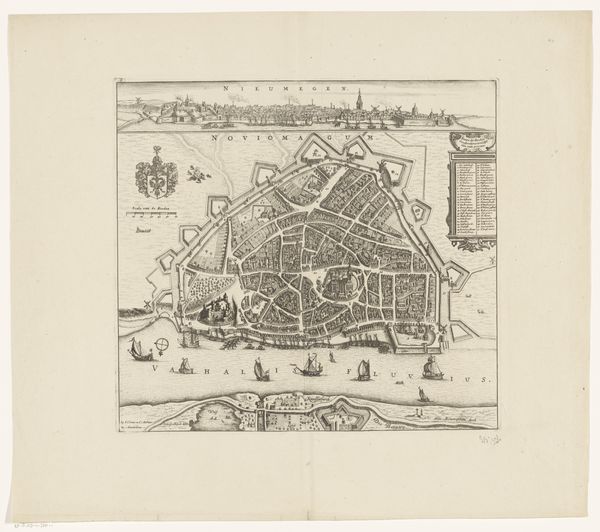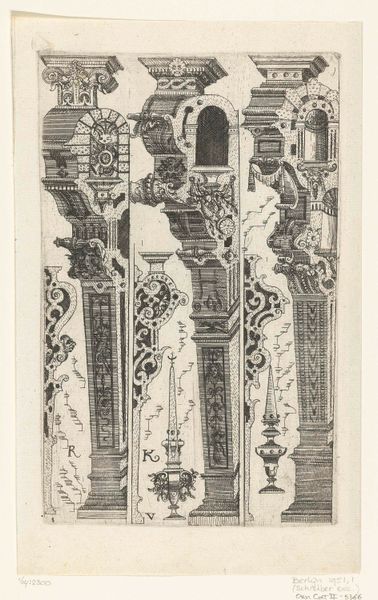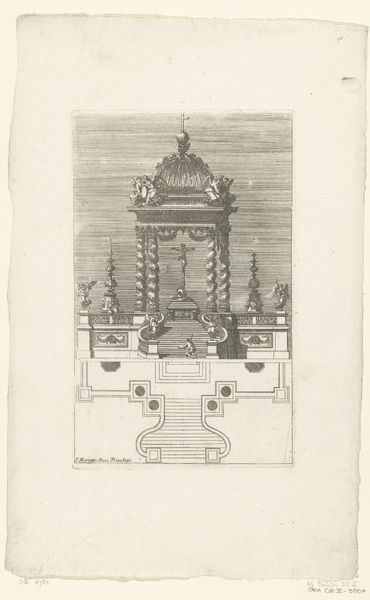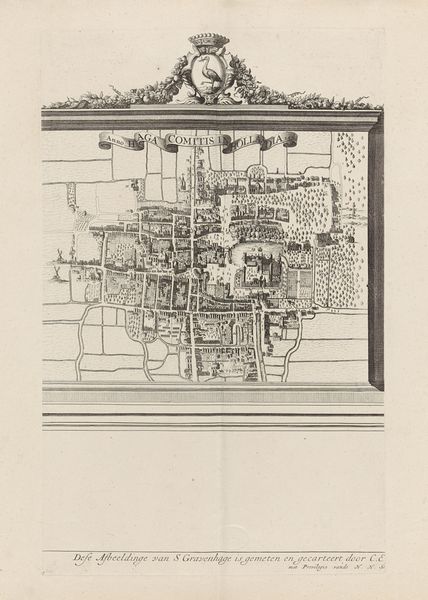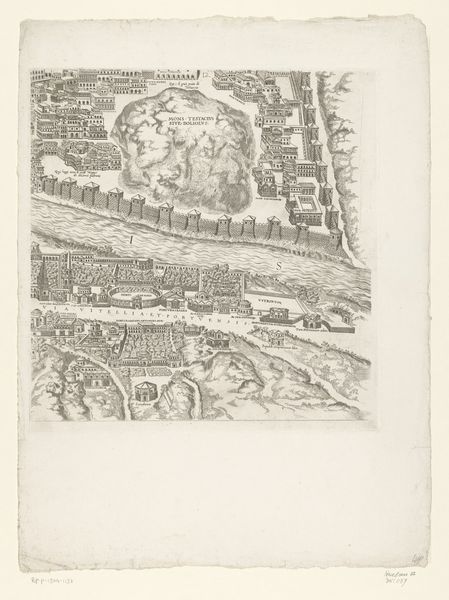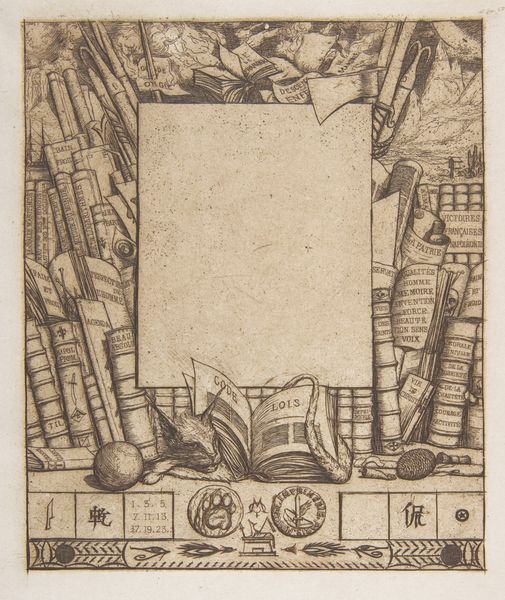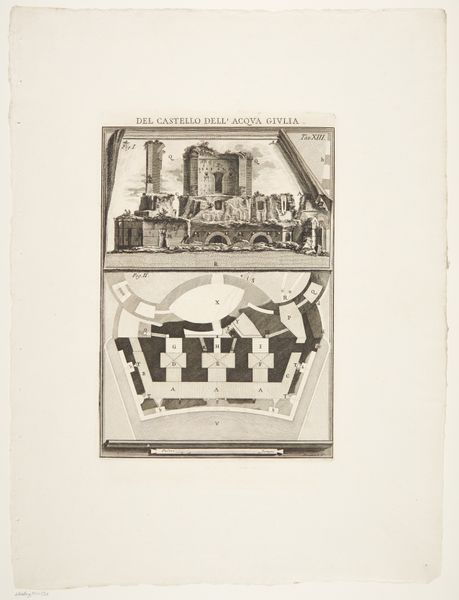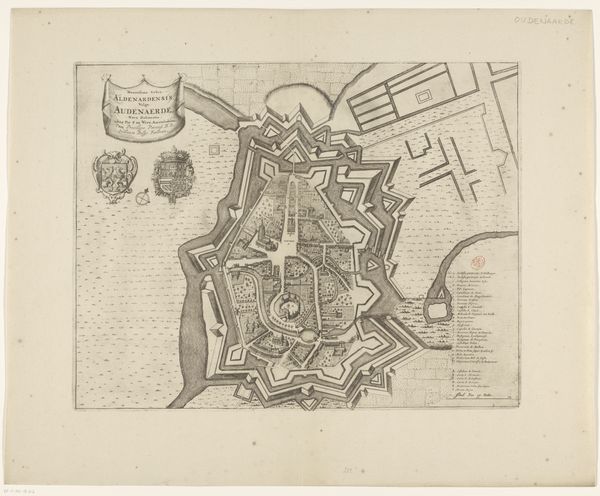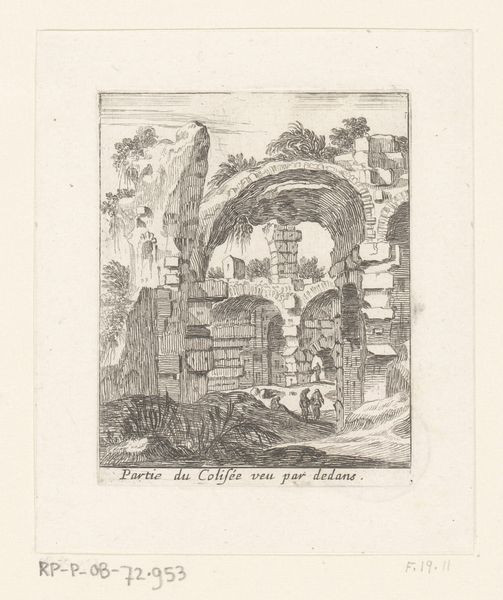
print, engraving
#
narrative-art
# print
#
old engraving style
#
landscape
#
figuration
#
line
#
history-painting
#
northern-renaissance
#
engraving
Dimensions: height 518 mm, width 417 mm
Copyright: Rijks Museum: Open Domain
Curator: This engraving, dating back to 1553, is titled "De kerk onder vuur," which translates to "The Church Under Fire." It's attributed to the artist known only as Meester FSW. Editor: My immediate impression is one of chaos. The stark black lines capture a sense of urgent violence against what looks like an institution or fortress, a building riddled with conflict. Curator: Indeed. The composition employs a clear visual hierarchy. Observe the strategic placement of divine figures, juxtaposed against earthly turmoil. This use of line, specifically the delicate hatching, is essential to understanding how the engraver manipulates light and shadow to reinforce symbolic weight. Note also the framing created by the upper celestial band and the lower ramparts. Editor: Looking closer, I'm struck by the details in the battle scene—the primitive war machines, the siege ladder, and even the defensive measures being employed at the entrance. How would these engravings have been made back then and in what quantity? That impacts the value and intended audience and I notice all of the text printed on the building itself. Curator: The inscriptions act as signifiers, reinforcing the narrative, and its didactic purpose, offering a discourse on resistance. Consider the materiality of this engraving: it suggests reproducibility, hinting at broader circulation and its effectiveness as propaganda. Editor: It is interesting how this print mixes the high and the low together. We have the heavenlies and then almost childish instruments of warfare. But look how they are organized around the besieged church. The tools used for creation like chisels and burins must have been simple, but used to create a very complex political piece of agitprop. What sort of resistance do you think it represents? Curator: It is suggestive of the theological conflicts engulfing Europe at the time and suggests an intellectual challenge rather than brute resistance to authority, visible through its emphasis on doctrinal statements displayed on the building's facade. The style references the Northern Renaissance which further indicates intellectual concerns, echoing humanist dialogues. Editor: This analysis makes the print much more vivid to me now. It’s amazing to think how craft intersects with politics. I would never had considered the church under fire could also refer to the clash of beliefs and new ideas. Curator: It provides a lens to the 16th century; form follows meaning and the careful use of symbolic elements directs the viewer's interpretation.
Comments
No comments
Be the first to comment and join the conversation on the ultimate creative platform.
